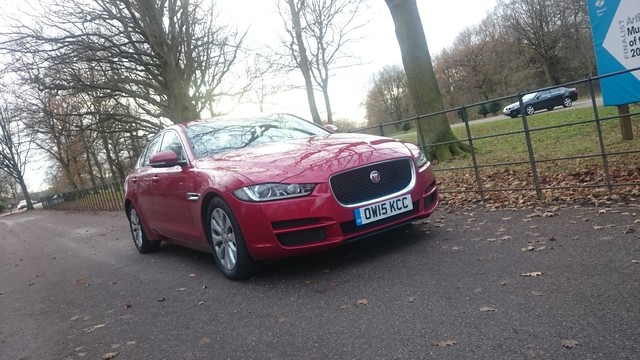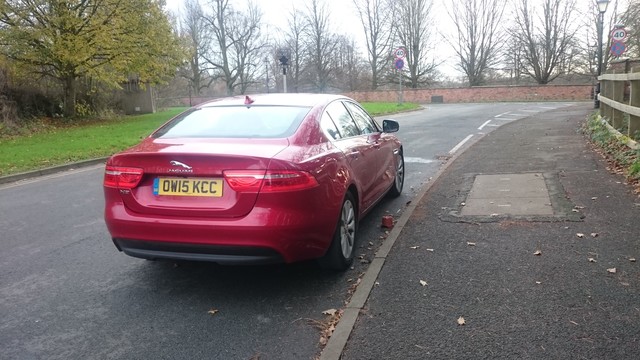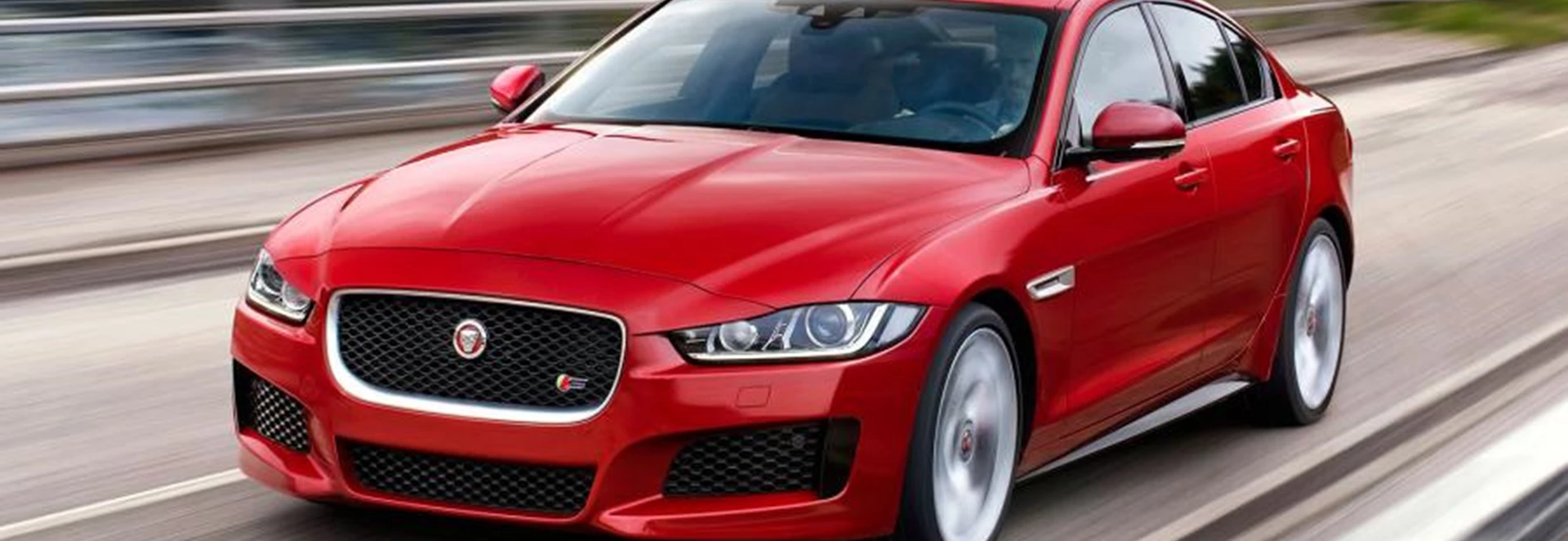With the Jaguar XE ranging in price from around £29k to more than £44k, there’s quite a lot of scope to stay sensible or splash the cash. So, with this in mind, we wanted to test Jaguar’s most affordable BMW 3-Series rival, to see firstly whether it’s any good, and secondly if it still feels worthy of the leaping cat badge at a Ford Mondeo price point.
With a really sharp exterior design, the XE certainly looks great, whatever the trim level. It might have been quietly criticised by some for being a tad conservative, but there’s no doubting its heritage, as it clearly echoes the design language of the XF and XJ, but in a smaller package. If anything, this compact size gives the XE the sportiest appearance of any Jaguar saloon.
Perhaps the biggest give-away to the entry-level SE are its 17-inch alloy wheels, which struggle to fill the arches and have a rather stately appearance.

On the inside, the most jarring feature is the cloth seats. The rest of the cabin looks well-finished, snug and sporty, with Jaguar’s familiar steering wheel and enlarged graphics in the rev counter, but there’s no getting away from the lack of leather upholstery. Some may even prefer cloth on a hot day or cold morning, but leather seats undeniably bring up the luxury feel a notch or two, and will be reason alone for many to choose the Prestige trim.
But, aside from this, the SE trim is well-equipped, with an eight-inch touch-screen including sat-nav and Jaguar’s updated infotainment system. There’s also the all-important cruise control – as most XE’s will surely spend a lot of time on the motorway – along with DAB digital radio, rear parking sensors, Bluetooth and an 80-watt stereo.
The latest Jag certainly isn’t lacking in safety kit either, with autonomous emergency braking, torque vectoring, a winter driving mode and pedestrian protection active bonnet, which pops up in the event of a collision, to help create a softer impact zone.
However, what’s both more impressive, and harder to put a price tag on, is the sophisticated chassis which underpins the XE. Jaguar’s engineers have really pulled it out of the bag here, specifying double wishbones for the front suspension and an integral link rear setup, which is pretty much the Holy Grail for a car of its type.
Because each wheel can be controlled independently and with real precision, the handling is poised and secure, but with no harm to ride quality, which always remains excellent. Here, those small 17-inch wheels actually pay dividends, because while they might not offer the outright grip and precision of bigger alloys with lower profile tyres, their ability to soak up bumps is magnificent.

The power steering feels slick and well-weighted, even if it’s not dripping with feel – it is electric after all – and the Jaguar certainly feels a cut above more mainstream models like the Mondeo and Volkswagen Passat to drive.
Renowned for their purring V8 engines, this is also a Jaguar which has turned over a much greener leaf, being able to return a stonking 75mpg, while emitting just 99g/km of CO2. This is the real virtue of the new 2.0-litre diesel engine, which can feel a tad lethargic at lower speeds in entry-level guise, with just 161bhp. This is a feeling accentuated by the manual gearbox, which has very long gearing and a slightly heavy throw. We prefer the eight-speed automatic, and it’s particularly welcome if you spend a lot of time in town or stuck in stop start motorway traffic.
So, does the cheapest model in the line-up still feel like a proper Jag? In almost all respects the answer is a definite yes, it has the styling, excellent ride and handling and an interior not too far removed from the range-topper. But, just because there’s something not quite right about cloth seats in a Jaguar, we’d have to plump for the next step up and recommend the Prestige trim as the entry point to Jaguar ownership.




